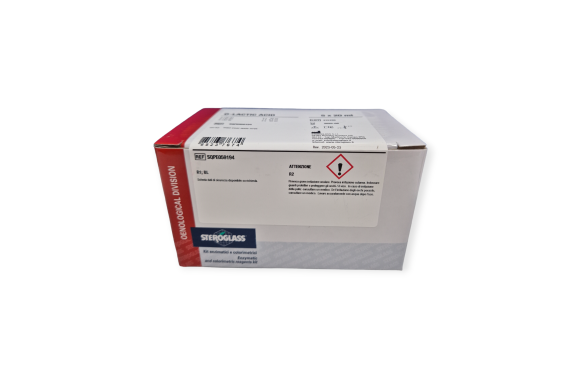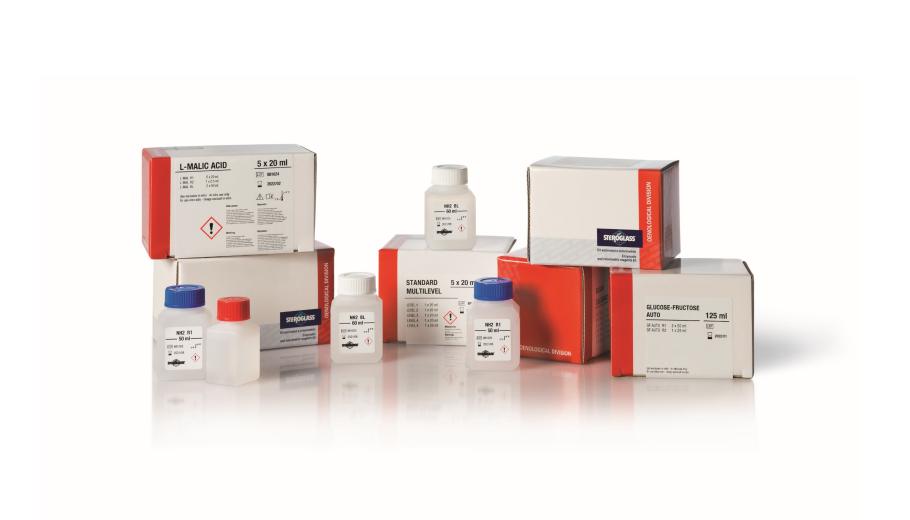Acid D-Lactic Kit
Contact our expert for more informations.

Significant quantities of lactic acid (L-lactic acid 0.5 - 2.5 g/l) can be found in wine as it is the main product of malolactic fermentation by lactic bacteria.
However, lactic acid can be produced by the metabolism of sugars (fermentation) by both yeasts (L-lactic acid) and bacteria (D-lactic acid). Thus, the presence of D-lactic acid (D+ dextrorotatory) indicates an unpleasant bacterial development from residual sugars that is always accompanied by the production of acetic acid. This incident at the level of sensory analysis is called lactic cue.
Benefits
-
Lactic acid in the food industry
In the food industry, lactic fermentation allows the production of acidic food such as yogurt, where lactobacilli are used. This type of fermentation takes place in the absence of oxygen and the glucose is converted into lactic acid.
Other types of vegetable lactic acid fermentations include foods such as sauerkraut, olives, kimchi, kefir, yogurt, soy milk, cheese and tofu.Lactic acid is a natural preservative that inhibits food spoilage.
Before being placed on the market, food products must be analyzed with enzymatic kits which, thanks to high quality purified enzymes, allow precise and specific measurements.
Technical features
ADVANTAGES
READY TO USE: Liquid and easy to use.
PRECISION AND SPECIFICITY: Characterized by high specificity, they provide accurate and repeatable data.
LOW COSTS AND LONG SHELF LIFE: Minimal cost per test and a long shelf life (average 24 months).
FAST ANALYSIS: Allow for quick and reliable results (up to 300 tests/hour), especially when used with automated instruments like our HYPERLAB series analyzers.
SIMPLE AND ECONOMIC CALIBRATION: It is possible to use single-method and/or multi-parametric calibration/verification standards. The determination of the Blank is performed automatically every 12 hours with the Hyperlab analyzers.
METHODS APPROVED BY INTERNATIONAL STANDARDS: Numerous enzymatic methods have been approved and validated by international organizations such as:
ISO (International Standardization Organization)
AOAC (American Association of Analytical Chemists)
IFU (International Federation of Fruit Juice Producers)
OIV (International Wine Office)
IDF (International Dairy Federation)
EBC (European Brewery Convention) and many others.
STERGLASS ENZYMATIC AND COLORIMETRIC KITS
Enzymatic and colorimetric kits are widely used in quality control for the main analytical determinations of a variety of food products such as fruit juices, wine, beer, dairy products, eggs, meat, and for the monitoring of fermentation processes carried out by microorganisms for the determination of sugars, organic acids, and other components such as sulfites, phenolic compounds, and metals.
Based on high-quality purified enzymes, enzymatic analysis allows for precise, highly accurate, and repeatable measurements, even in complex matrices. The absorbance variation, measured spectrophotometrically as a result of enzymatic transformations, is closely correlated with the concentration of the various analytes sought.
Industries
Applications
Product codes
| Steroglass code | Description | N° of analyses |
|---|---|---|
| SQPE059194 | d-lactic acid 5x20ml | manual 50/100, automatic 200/300 |
